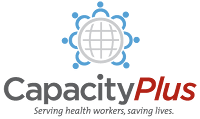Egypt
Effect of Applying Performance Improvement Model on Ante-Natal Care Nurses Performance in Family Heath Centers in Qena City
This study attempts to identify the effect of applying performance impr ovement model on antenatal care nurses’ performance in family health centers. [adapted from abstract]
- 948 reads
Effect of Nursing Educational Guidelines on Women’s Awareness, Health Practices and Beliefs Regarding Prevention and Early Detection of Breast and Cervical Cancer
To evaluate the effect of nursing educational guidelines on women’s awareness, health practices and beliefs regarding the prevention and early detection of breast and cervical cancer. [from abstract]
- 760 reads
Applying Organizational Learning to Health Challenges in the Developing World
In countries that have historically suffered from limited resources and entrenched medical systems – including Egypt, Afghanistan, and Tanzania – or ganizational learning approaches have enabled frontline health managers and their teams to achieve measurable improvements in critical areas such as family planning, HIV/AIDS treatment and prevention, children’s health, and maternal mortality. [from introduction]
- 850 reads
Nurses’ Perception of the Quality of Nursing Work Life and Related Priorities for Improvement in Ain shams University Specialized Hospital
This study aimed to assess nurses’ perception of the quality of nursing work life and related priorities for improvement in Ain shams university specialized hospital. [from abstract]
- 909 reads
Community Based Education in Health Professions: Global Perspectives
“Community Based Education in Health Professions: Global Perspectives” presents a collection of case studies from Bangladesh, Brazil, Egypt, India, Pakistan and South Africa describing different ways of planning, implementing and sustaining community-based education for health students. The case studies provide an account of what worked and what did not, the trials and errors, and the challenges and lessons learned. [adapted from introduction]
- 3711 reads
Right-Sizing Egypt's Health Workforce
This brief outlines an initiative to address some of Egypt’s health workforce challenges through the development of a workforce planning model to assess workforce needs and build ministry capacities in its implementation. [adapted from publisher]
- 1293 reads
Workforce Planning Tool: User's Guide
This tool collects data related to the current size of staff by position and the facility workload for each department. It then uses worker activity standards developed by Egyptian expert panels to calculate the precise workforce required to meet the workload of each facility. The tool’s output capabilities display the size of the gaps between current and required staff, examined across facilities, specialty areas, and types of worker, as well as among specialties within a facility. [from author]
- 2193 reads
User's Manual for Developing a Workload-Based Staffing Model in Egypt
This manual is a how-to guide to the workload indicators of staffing need (WISN) process and its implementation in Egypt. It provides a
step-by-step review of the WISN method and the calculations used in the analysis of the workforce to determine staffing needs. This guide is largely based on the Egyptian experience with the WHO methodology and how it was tailored to meet Egypt’s specific context and needs. [from introduction]
- 1482 reads
Reforming Nursing Education in Egypt: A Case Study in Reform Management
The case study outlines a program of nursing reform in Egypt to correct shortages and improve nursing quality by restructuring nursing education.
- 2053 reads
Capacity Building in Egypt: Management and Leadership Training at the Leadership Academy
This case study explores the development and impact of a training program to improve health sector management and leadership so that the ministry of health could become more efficient and provide the quality of services that the Egyptian population needed and demanded. [adapted from author]
- 1478 reads
Development of Workforce Activity Standards in Egypt
The purpose of this report is to discuss the process of developing health workforce activity standards in Egypt and its importance in estimating workforce requirements. The report describes the methodology used to develop and test these standards, as well as the challenges faced during the process and the lessons learned. [from introduction]
- 769 reads
eLearning Reproductive Health Module to Support Improved Student Learning and Interaction: A Prospective Interventional Study at a Medical School in Egypt
This study aimed to evaluate students’ learning outcomes from a redesigned eLearning version of the reproductive health section of a public health course, as measured by improved knowledge acquisition and opinions, and to assess e-course utilization. [adapted from abstract]
- 1045 reads
Impact of a Service Provider Incentive Payment Scheme on Quality of Reproductive and Child-Health Services in Egypt
A case-control, quasi-experimental study was designed to investigate the effect of a performance-based incentive payment scheme on behaviours of public-sector service providers in delivering a basic package of maternal and child-health services in Egyptian primary healthcare units. [from abstract]
- 1927 reads
Revitalizing Public Health Clinics and Their Boards of Directors: the Takamol Model in Egypt
This document outlines the Takamol project in which a corporate training and management methodology was adapted for developing and sustaining quality management teams from governorate to district to clinic levels. [adapted from author]
- 2061 reads
Improving Health through Postpartum Home Visits, Family Planning Counseling: Scaling-Up Best Practices in Egypt
This paper shows how the Extending Service Delivery improve maternal and newborn health in Egypt’s Kaliobia Governorate by scaling-up the government’s postpartum care package in 13 villages, and training community health workers and nurses to put the package into practice. [from author]
- 2795 reads
Scaling Up Proven Public Health Interventions through a Locally Owned and Sustained Leadership Development Programme in Rural Upper Egypt
The Ministry of Health introduced a leadership development program in Aswan Governorate. The program aimed to improve health services in three districts by increasing managers’ ability to create high performing teams and lead them to achieve results. The program introduced leadership and management practices and a methodology for identifying and addressing service delivery challenges. [adapted from abstract]
- 2288 reads
Practices of Rural Egyptian Birth Attendants During the Antenatal, Intrapartum and Early Neonatal Periods
While previous Egyptian studies have identified provider practices contributing to maternal mortality, none has focused on neonatal care. This report details a survey of reported practices of birth attendants. As well, 217 recently-delivered mothers in rural areas of three governorates were interviewed about antenatal, intrapartum and postnatal care they received. [from abstract]
- 2885 reads
Review of the Utilization of HEEPF: Competitive Projects for Educational Enhancement in the Egyptian Medical Sector
The aim of this paper is to review the share of the medical sector in the higher education enhancement project fund (HEEPF), its outcomes, sustainability, and to provide recommendations for keeping the momentum of reform pursuit in the future. [from abstract]
- 1644 reads
Linking Family Planning with Postabortion Services in Egypt: Testing the Feasibility, Acceptability and Effectiveness of Two Models of Integration
This research study was undertaken to test the feasibility, acceptability, and effectiveness of two models of integrating family planning services with postabortion services.
- 5379 reads
Growing Management and Leadership for Health in Aswan, Egypt
This short documentary film chronicles the four year journey, initially funded by USAID’s Office of Population, that the governorate of Aswan, Egypt embarked upon to develop greater leadership within all levels of its health care staff. The video shows an innovative process that develops leaders at all levels, including the front lines of health care, to identify challenges and work in teams to overcome obstacles and achieve service improvements.
- 2922 reads
Health Information System Development Plan for Egypt: Phase 1 HIS 2000
This report was developed to outline broad strategy, create a common vision for developing a new core health information system, and describe specific technical development tasks in detail. The new information system must be designed from the top down based on information demand. This should focus development on clear data collection and processing priorities, eliminate collection of unused data, and produce an efficient and relevant system.
- 3012 reads
Findings of the Egyptian Health Care Provider Survey
This report presents results from the Egypt Health Care Providers Surveys, the objectives of which were to: provide a comprehensive picture of all sources of health care services; provide policy relevant data on critical issues for health sector reform; and create a database on health care providers for use by the Ministry of Health and Population in developing policy reform proposals. Five separate surveys were conducted on health care institutions, private clinics, pharmacies, dayas (traditional birth attendants), and other practitioners. The sample of 10,048 providers was developed from a complete enumeration of all health care providers in sampling areas and data from the 1986 national census.
- 6955 reads
Building Health Management Information Systems in Egypt: the Role of USAID Technical Support in Program Assistance
In Egypt there is increasingly strong political support for health sector reform including a widespread recognition that a working information system is necessary to undertake and monitor this reform. This paper assesses the role of USAID technical support to help build health management information systems in Egypt.
- 4201 reads
Egypt Service Provision Assessment Survey 2004
The 2004 Egypt Service Provision Assessment (ESPA 2004) survey was designed to collect informationon the provision of reproductive health and child health services in Egypt in order to complement the information obtained through the 2003 Egypt Interim Demographic and Health Survey. The ESPA 2004 collected information on the preparedness of health facilities in Egypt to provide high quality care to clients seeking services for family planning, maternal health, child health, and sexually transmitted infections. A representative sample of 659 clinics of all types of facilities, in both government and nongovernmental organization facilities, was assessed. The survey included, in addition to the resources of the facilities, interviews with service providers, observations of consultations between the providers and clients, and interviews with clients after they were served. The information included in this report is important for identifying areas of intervention that will help improve the quality of family planning, maternal health, and child health services provided to clients. [preface]
- 4230 reads
Multiple Public-Private Jobholding of Health Care Providers in Developing Countries: An Exploration of Theory and Evidence
This review examines the systemic and individual causes of multiple job holding (MJH) and evidence on its prevalence. MJH should be seen as resulting initially from underlying system-related causes. These include overly ambitious efforts by governments to develop and staff extensive delivery systems with insufficient resources. Governments have tried to use a combination of low wages, incentives, exhortations to public service, and regulation to develop these systems.
- 3732 reads




